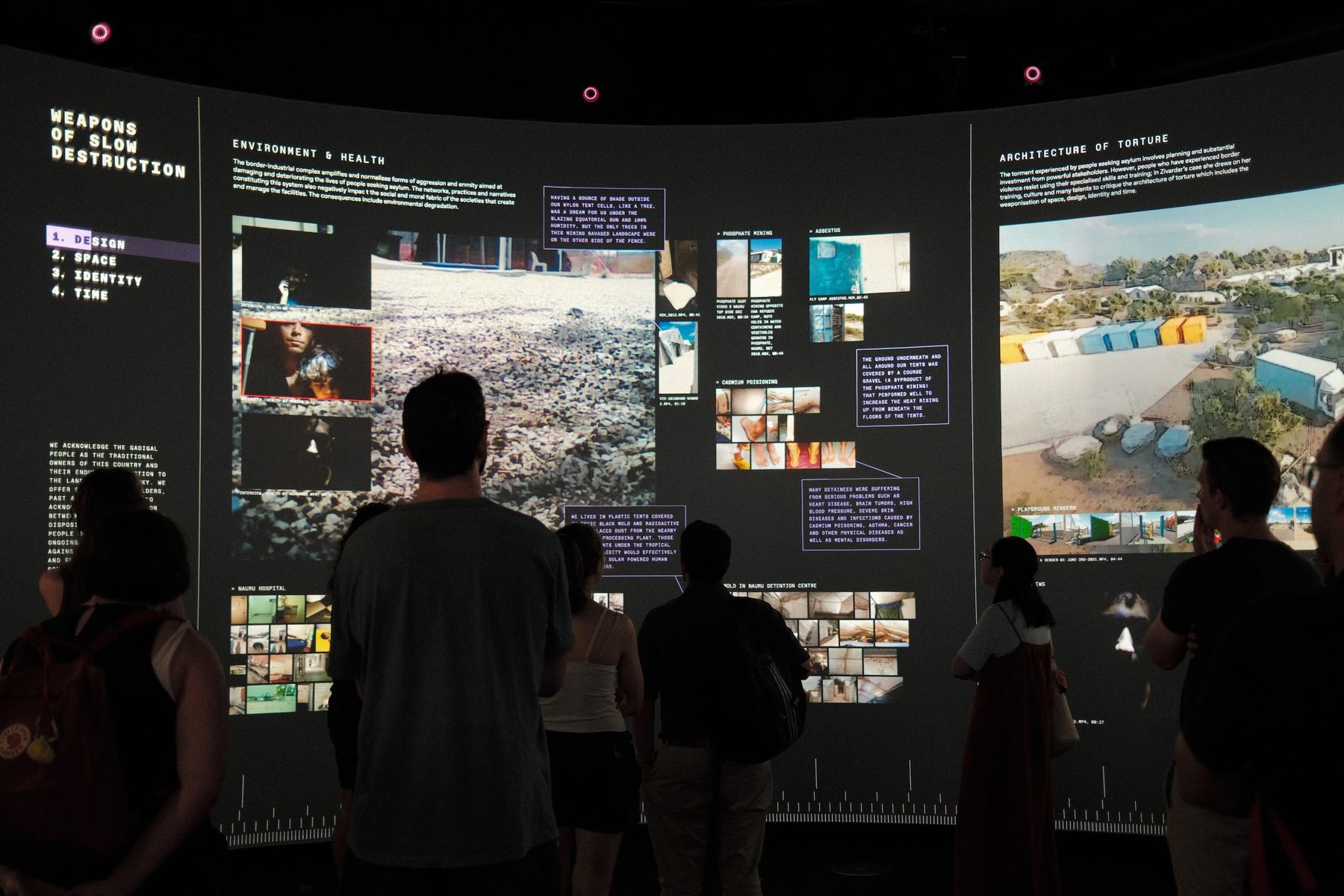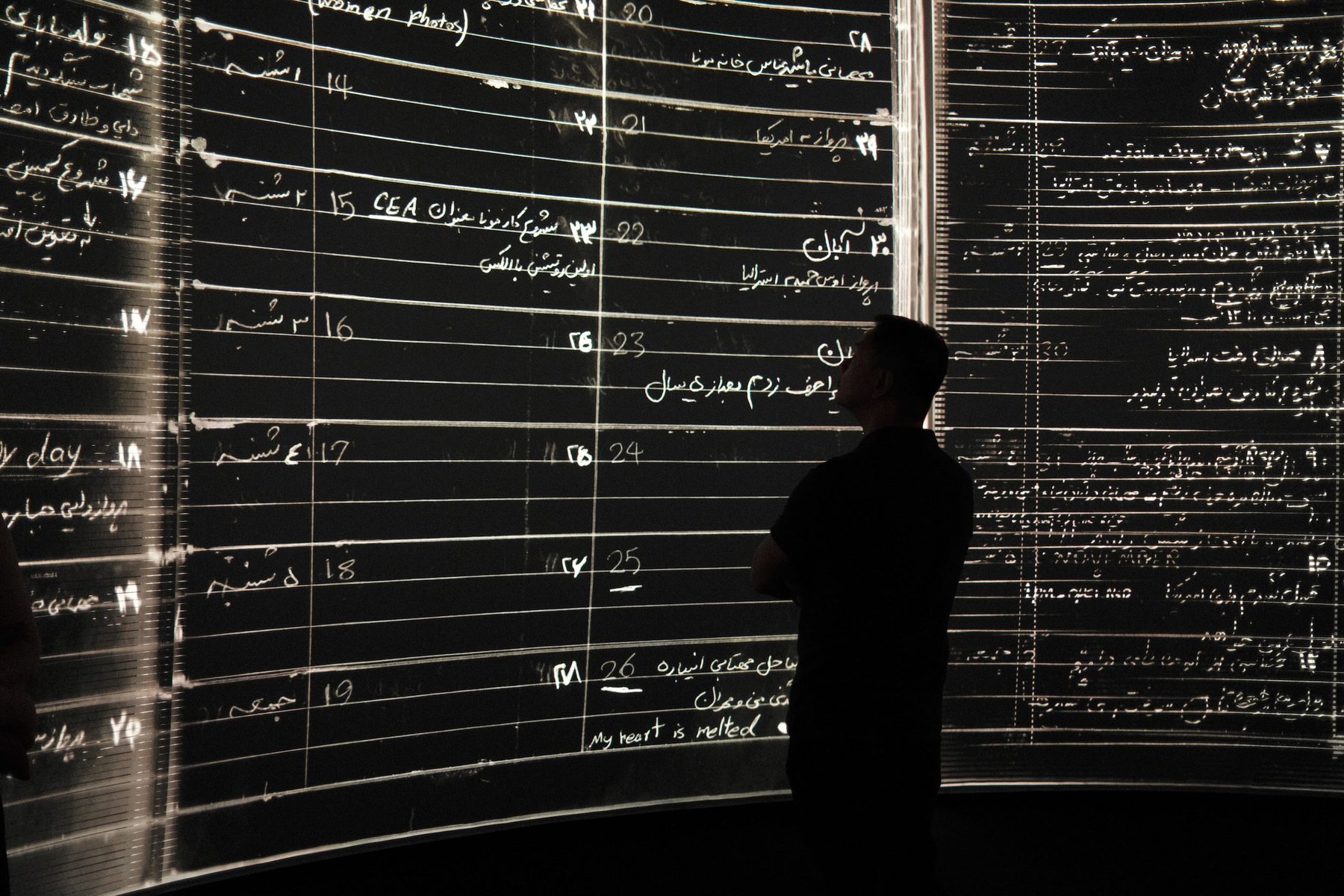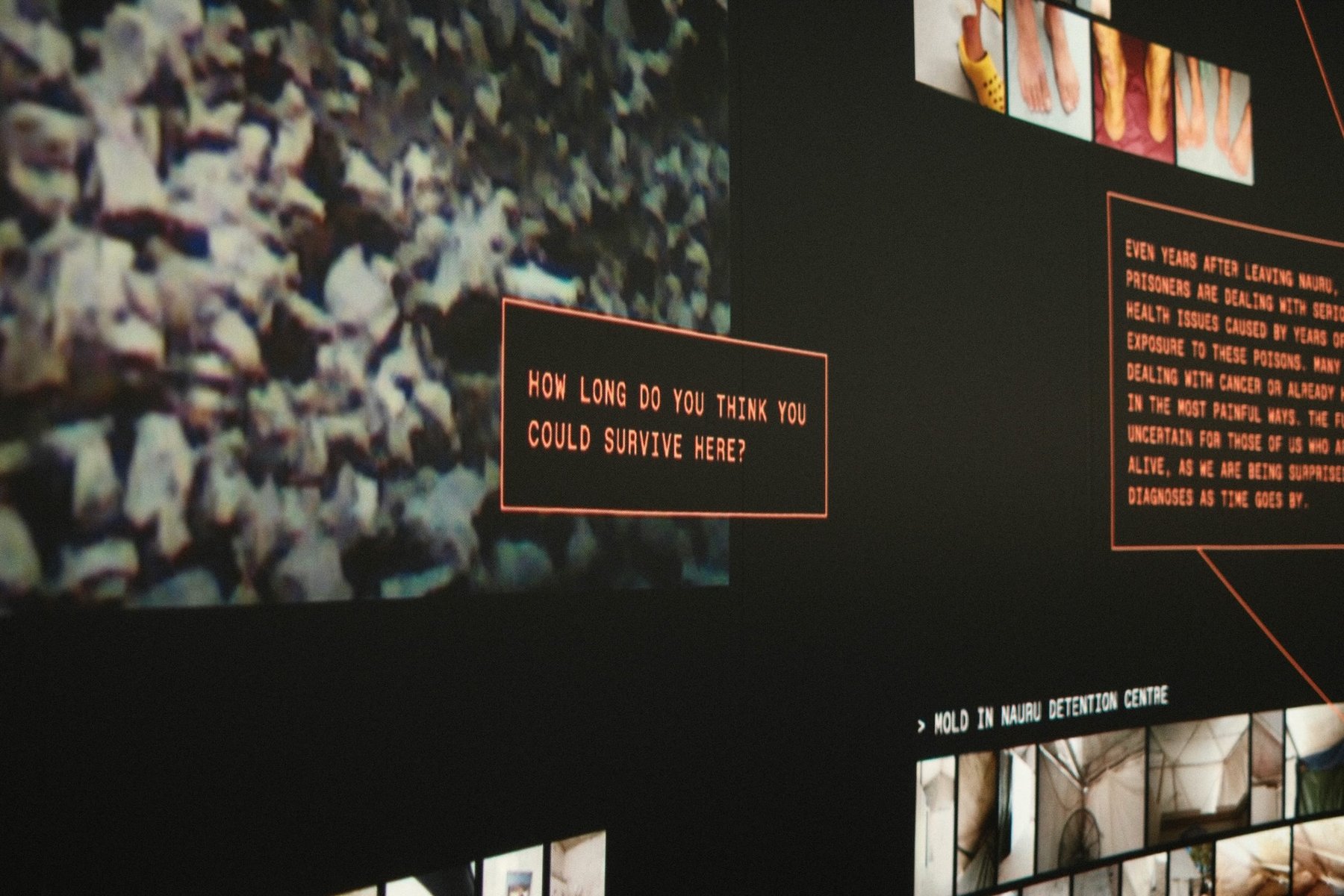| Year | 2025 |
| Credits | Omid TofighianCo-Writer and Curator Elahe ZivardarCo-Writer and Curator Thomas RicciardielloVideo Production and Audio Design Janey LiVisual Communication Design Darren LeeData Arena Technical Support |
| Links | |
| 3D Stereo | No |
| Tags | activism archive exhibition refugees resistance |
Weapons of Slow Destruction
An immersive exhibition which explores the weaponisation of design, space, identity, and time inside an Australian immigration detention centre.
This project has been featured as a UTS Case Study. Read more about this project from the UTS Centre for Social Justice and Inclusion here.
Disclaimer
This project contains themes related to abuse and violence. Some content and images on this page may be distressing for some audiences.


Background
Weapons of Slow Destruction is a unique exhibition that interrogates the strategies and practices of systematic torture associated with Australia's immigration detention regime. Focusing on the incarceration of refugees in the Republic of Nauru, Weapons of Slow Destruction showcases examples from Elahe Zivardar's never-before-seen archive; a selection of diverse material collected and categorised during six years held on the island.
The exhibition was curated by Elahe Zivardar and Omid Tofighian, and developed and delivered by the UTS Data Arena team.
The project aims to expose how design, space, identity and time are weaponised in:
- the production and maintenance of the offshore detention centre
- the control and exploitation of human beings
- the construction of narratives about national security, national identity, and national interest
Building upon a public preview in July 2024, this exhibition continues to examine the largest unseen archive of images, film footage, interviews, and documents from the Australian-run immigration detention centre in Nauru. Weapons of Slow Destruction provides exclusive first-hand commentary and transitions through design, space, identity, and time. These provide critical lenses to help interpret this interlocking material in multidimensional ways.
The project presents ways refugees have used cultural heritage, art, and knowledge to find ways to resist, survive, and heal. It raises important philosophical, historical, cultural, and political questions about the relationship between colonialism, carceral-borders, and intersectional forms of discrimination in Australia.


Exhibition Format
The Weapons of Slow Destruction project is produced as a 23-minute video experience, designed to wrap around the entirety of the Data Arena’s 32K display. The archival curation unpacks over 420 photographs, architectural drawings, and maps. The exhibition sources twenty-seven (27) videos which include interviews with detainees, 3D model renders, and over fifty (50) diary scans and calendar scans. This selection from Elahe’s full archive is categorised and accompanied by first-person annotations to provide intimate detail and context.
Dynamic annotations address each weapon for focus. As a lens for reflection they lead consideration: firstly on design, then on space, then on identity, then time . The material is further categorised into five sections around the theatre -- Environment & Health, Architecture of Torture, Targeting Vulnerable People, Security & Militarisation, and Protest & Creative Resistance.




Screenings
This exhibition was open to the public with screenings from 6–14 March 2025. The Weapons of Slow Destruction video can be played upon request. Contact the Data Arena.
Special Thanks
This project was financially supported by a Social Impact Grant, awarded by the UTS Centre for Social Justice and Inclusion. The UTS Data Arena also like to thank the National Justice Project for the introduction they made for Omid Tofighian to meet with us and start this ambitious project.